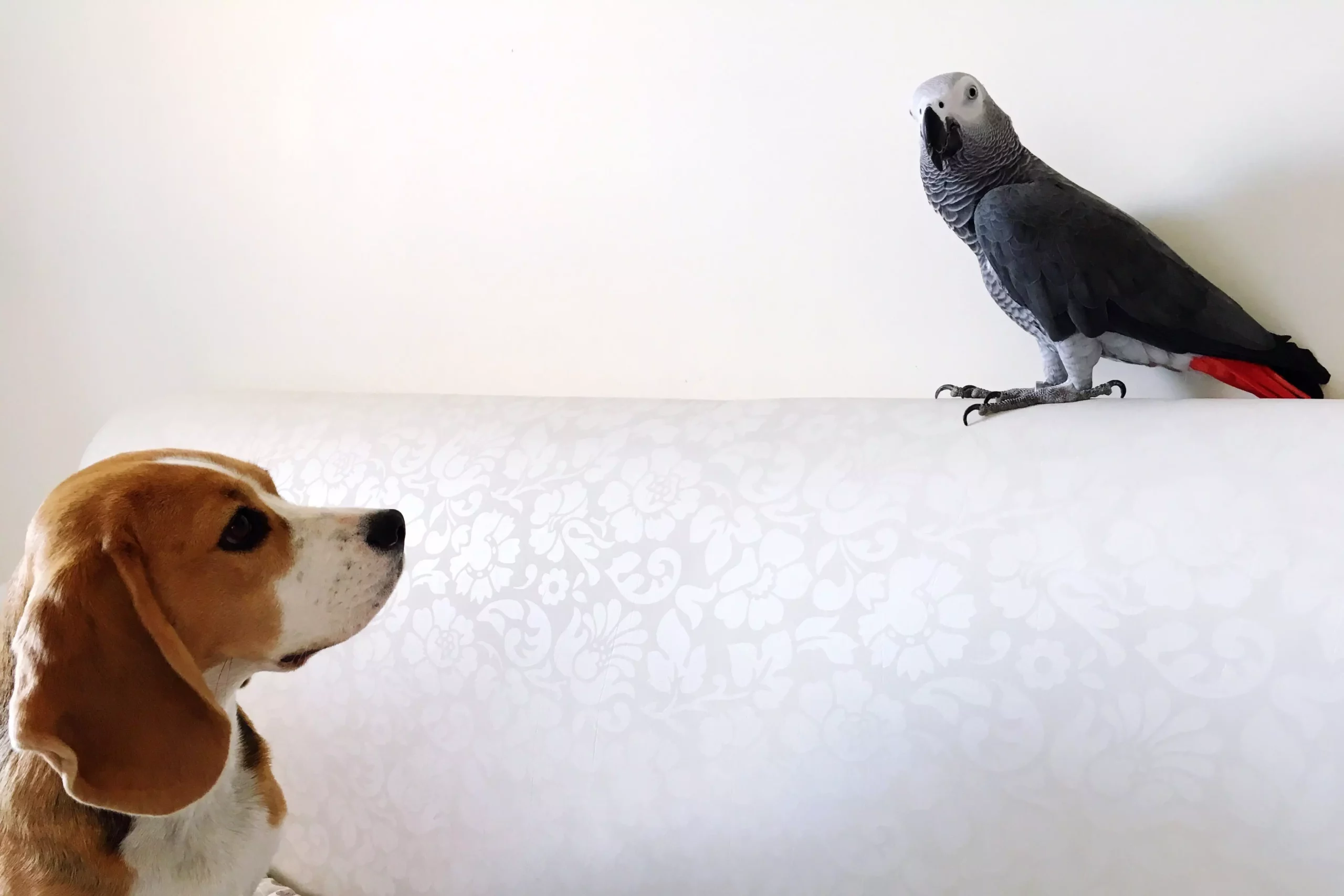Integrating a dog and a bird into the same household is like orchestrating a delicate performance; it requires patience, understanding, and a keen awareness of each animal’s instincts. As much as we love our pets and want them to cohabitate peacefully, we must remember the natural behaviors that drive them. Dogs are inherently predatory animals, a fact that should not be overlooked when considering securing a feathered friend. Birds, on the other hand, are often viewed as prey in the eyes of canines, creating a unique set of challenges for owners. Nonetheless, with the right strategies and a commitment to safety, the coexistence of these two species is possible—and can be incredibly rewarding.
Understanding Instincts: A Key to Successful Integration
Before introducing your dog to a bird or vice versa, it’s imperative to recognize that both animals come with innate instincts rooted in their evolutionary backgrounds. These instincts can create significant hurdles during the initial interactions. For example, a dog’s prey drive can be quite strong, even if the dog seems passive or friendly. An unfocused dog may instinctively chase the bird, putting the latter in danger, even in what might feel like a controlled setting. Therefore, the groundwork for successful introductions lies in an understanding of these instincts and how they manifest.
Start your introduction by creating a controlled environment. This doesn’t mean throwing both animals together in a room and boarding them on a friendly playdate. Instead, the first few encounters should occur in short bursts, lasting only a few minutes as you monitor their behaviors. This slow-paced approach will help ease both animals into accepting one another’s presence without overwhelming them.
Creating a Neutral Territory
When the time comes for an initial introduction, it’s essential to choose a neutral space that doesn’t belong to either animal. Think of it as hosting guests at a mutual friend’s house rather than your personal territory. An unfamiliar room, different from where the bird’s cage is usually situated, can help reduce territorial aggression from both parties. By bringing them into a neutral domain, you minimize the chances of either animal feeling the need to assert dominance or aggression.
During these initial meetings, having treats available can act as a positive reinforcement tool. Dogs and birds are often motivated by food, so rewarding them with their favorite snacks can create a more relaxed atmosphere where they associate each other’s presence with positive experiences. This strategy could go a long way in placing them on the road toward friendship.
Monitoring Interactions: Proceed with Caution
While it’s tempting to promote an atmosphere of inclusivity between your bird and dog, safety must always be your top priority. Never allow the bird to exit its cage in the presence of the dog. Regardless of the dog’s temperament, the chance of a mishap still looms large. Allowing the bird to fly freely around a curious dog could lead to disastrous outcomes, even if the dog seems harmless or well-behaved. Keeping interactions supervised ensures that you can intervene if necessary, fostering an atmosphere conducive to gradual acclimatization.
As time goes on and both your bird and dog seem comfortable in each other’s presence, you might consider allowing the dog some off-leash freedom in the same room. However, maintain vigilance; supervision is not something to be taken lightly during this transitional phase. It’s equally important to ensure your bird is in a secure cage that’s out of reach from the dog, emphasizing the importance of a safe environment.
Recognizing Individual Needs and Challenges
The complexity of introducing a dog and a bird varies significantly based on factors such as the dog’s age and breed. Puppies generally might require more consistency and repetition in training sessions to ensure they grasp the gravity of the situation. Likewise, certain breeds possess stronger hunting instincts; these dogs may need more time, guidance, and perhaps additional training techniques.
It’s easy to feel discouraged if the initial attempts at introductions don’t go as planned. However, resilience is paramount. Understanding that patience is a vital ingredient in this process can alleviate the frustration owners might encounter. With time, effort, and a solid strategy, the prospect of a harmonious relationship between your dog and bird is not just a dream but an achievable reality.
In the end, the integration of a dog and a bird requires both animal awareness and a strategic approach. With a thoughtful introduction, constant supervision, and careful consideration of their instincts, you can foster a joyful and vibrant household where both pets thrive together in harmony.


Leave a Reply